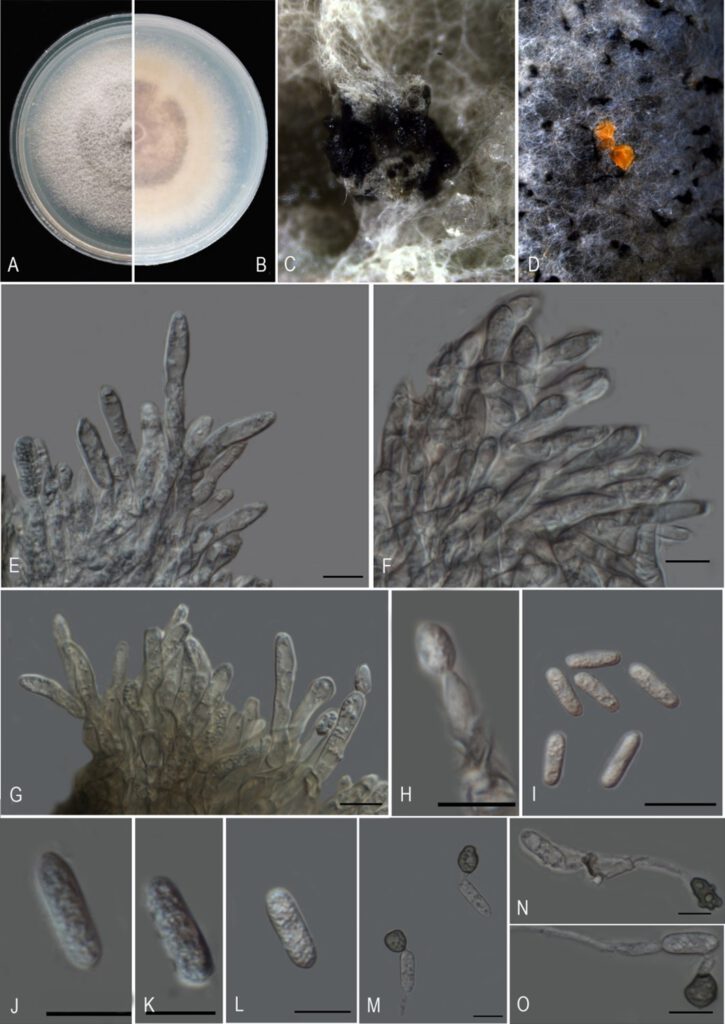Colletotrichum guangdongense J.W. Liu, Manawas., M. Luo & K.D. Hyde sp. nov.
MycoBank number: MB 559483; Index Furgorum number: IF 559483; Facesoffungi number: FoF 10693;
Etymology–In reference to the Guangdong province, from where the samples were collected.
Holotype–ZHKUCC 21-0105.
Endophytic on C. grandis cv ‘Tomentosa’ twig. Sexual morph: not observed. Asexual morph on PDA: Conidiomata is produced on the surface of mycelium, apricot to coral, liquid to viscous. Vegetative is hyline, smooth-walled, septate and branched. Setae not observed. Conidiopho99999res 20–70 × 3–7 (x̄= 38 × 5, n= 50), cylindrical, hyaline, glossy, 1 to 4 cells, unbranched or base branched. Conidia 10–20 × 4–6 μm (x̄ = 18 × 5 μm, n= 50), straight, hyaline and smooth-wall. Appressoria was brown to gray, round to oval and edge integrity.
Cultural characteristics. Colonies on PDA reaching 65 mm diam. after 7days at 28℃, growth rate 8–11 mm/day (x̄= 10 mm, n=6), colonies circular, margin filiform, slightly rasied, blankets appearence, flesh mycelia and colony from above: umber to flesh; reverse: dark brick to cinnamon to buff.
Material examined. China, Guangdong province, Huazhou, isolated from healthy twigs of C. grandis cv ‘Tomentosa’, May 2019, YX Shu, (dried cultures ZHKU 21-0089 holotype, 21-0107); living cultures ZHKUCC 21-0105 ex-type, ZHKUCC 21-0106 ex-paratype).
Habit and host. On healthy twig of C. grandis cv ‘Tomentosa.
Known distribution. China (Huazhou, Guangdong provinces)..

Morphological characteristics of Colletotrichum guangdongense (ZHKUCC 21-0105; Holotype). A, B. Upper and reverse sides of cultures on PDA seven days after inoculation. C. Fruit body. D. Conidiomata. E–H. Conidiophores. I–L. Conidia on PDA. M–O. Appressoria. Scale bars: 10 μm (E–H, J–O); 20 μm (I).
